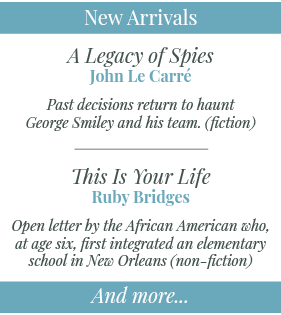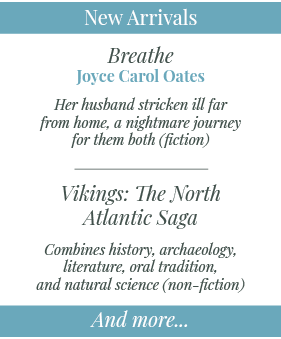Mrs. Jefferson Davis, wife of the infamous president of the Confederate States of America, made her interesting enough that Frazier would write a novel about her?
I scooped the book off the shelves. What followed were many late evenings leapfrogging time and space to follow Varina Howell of Natchez, Mississippi, through her life as it careened (in no particular order) from Washington, DC, to Richmond, Virginia, to New York City, to the wilds of Florida as she and her children tried to flee to Cuba, to Germany, and to Paris, with various other stops along the way. Always at her side was her reticule, which held the morphine she’d been using since age thirteen, and the “suicide pistol” her husband had given her for use if the Union soldiers tried to assault her. The organizing conceit of the novel was fascinating: the reappearance forty years after the war was lost of a Negro boy she’d rescued from a beating, then raised alongside her children and from whom she’d been parted at their capture by Union forces in those aforementioned Florida swamps. It’s now the twentieth century. Varina is near the end of her life and she’s buried five of her six children—one in seemingly every decade of her life. The return of the boy she called “Jimmie” (now a well-respected teacher named James Blake) gives her a chance to remember the tragedies and triumphs of the belle, mother, first lady, fugitive, and grande dame she’d been. He asks her to tell the story of his life as she knew it, his questions building to the obvious one: had she owned him? Especially evocative are the passages written about the people and communities of the Confederacy in the days after it fell. The choices they were forced to make are not unlike those etched into our brains: the chaos in Afghanistan and the desperate images of the fall of Saigon. Varina is a powerful book that brought alive for me the struggle for survival after senseless carnage. It confronts big questions about a complicated time in our history through the patient but unrelenting inquiries of the polite James Blake and the rejoinders—at turns, unflinchingly honest and offered through the gauze of morphine—of the woman who saved his life, loved him as a mother, saved him a second time, and then passed him along to a future that she believed would be kinder than she could offer from a prison cell…or worse. Varina Howell Davis was a complex person in fact and is an intricate character of fiction. It’s worth your time to meet her. If you’d like a second opinion, look up a 2018 book review by Brenda Wineapple of the New York Times, “The First Lady of the Confederacy Considers Her Painful Past.” She calls Varina “a marvelously fallible character, complicated enough to stand on her compromised own.” By Jane Dickerson
Josephine Johnson was just 24 years old when her first novel, Now in November, won the 1935 Pulitzer Prize in Fiction. She was, and remains, the youngest person to win, and is the ninth among only twenty-one women who have won a Pulitzer for fiction since its inception in 1907. When considering novels from the 1930s, we usually can name the big guns like Hemingway, Fitzgerald, and Faulkner, but have never heard of Johnson, even though she went on to win numerous O’Henry Awards for her short stories and was an accomplished poet. This compelling and lyrical novel, set in the Dust Bowl, was published five years before The Grapes of Wrath. The novel is set in the Haldmarne family’s eleventh year on the family farm, most likely in Missouri, Johnson’s home state. The Haldmarnes had been town dwellers when Arnold, the father, decides they’d have better luck going back to the old family farm. They would have a chance of subsisting, at least. Unbeknownst to his wife and three young daughters, Arnold has mortgaged the farm to pay for supplies. From then on, the family’s elusive hope is to pay it off. At first, it seems possible, but after many drought years and the Depression, breaking-even seems fanciful at best. A tragic conclusion looms, but the heartbreak lies in the family itself. Marget, the middle daughter, narrates the story’s events, which have occurred over a span of years. She’s closest in age and sensibility to her younger sister, Merle, with whom she shares a profound sensitivity toward nature. The older sister, Kerrin, inhabits her own dark world, often moody, by turns angry or elated, but always distant. No one can understand her, and the sisters fear both Kerrin’s violent unpredictability and their father’s anger with her. The mother, Willa, is the heart of the family. Johnson’s knowledge of trees, plants, flowers, birds, and other wildlife is almost palpable in descriptions such as the following: Spring came first to the air, and then to the life of things. The elm trees were like sulphur smoke, or dust from a dry old fungus-ball; the wild ginger hard-packed still on the roots, but green with a silver mold, and in the ravine, I found a moccasin snake coiled and hating, while the cold spring water flowed over his skin, over and over until I grew almost chilled with seeing it. It’s no surprise that later in life Johnson became an environmentalist. Kerrin is as strong as a man and could be of help to the beleaguered father. Instead, Arnold hires a local man, Grant, to help in the fields, while the girls manage the farm animals and the home garden with their mother. Arnold rules the household; the mother works around him through suggestion, not confrontation. In this way, Johnson presents the traditional family constellation with concern for the hidden cost to the Haldemarne family’s well-being. Compared to many White authors, before and since, Johnson doesn’t stereotype or slight the neighboring tenant farmers, a Black family also struggling through the long drought and the Depression. The Ramseys, like all the surrounding farmers, share what they can when they can. But the Black family can’t meet the rent and are evicted. None of the neighbors has money to help them. Marget describes their extreme straits as the muledrawn Ramsey wagon, headed who knows where, loaded with children and “boxes and things that might have been kindling or chairs,” passes by the Haldmarne gate. The hired man, Grant, is the object of both Kerrin’s and Marget’s affections. Merle is indifferent to him. Unfortunately, Merle is the object of his affection. By the time Marget tells the Halemarne story in November, the desiccated fields and orchard have been destroyed by fire. Willa, the center of the family, incurs terrible burns. Kerrin’s behavior becomes more and more erratic, and she loses her teaching job. When the tax man appears, the reader isn’t sure what will happen to the family. Josephine Johnson was born into a Quaker family in 1910 and died in 1990. None of her other novels caught the public’s attention like Now in November. Her last was rejected by Simon and Schuster for what was deemed sympathy to homegrown Communism in the 1950s. Her upbringing and convictions led her to oppose the VietNam war in the 1960s and 1970s. Even though Johnson was 24 when she composed Now in November in her mother’s attic, she writes like someone older and wiser. I first learned about Johnson from an online article about the talented but essentially forgotten women who have won the Pulitzer for fiction. It’s our good luck that the novel was resurrected by the Feminist Press in the 1990s and that a subsequent edition came out in England in 2016. This book, like Steinbeck’s, should be remembered as one of the great tragic novels set in the Dust Bowl years. |
NewsletterCoffman residents, signup for monthly updates from the Library! Thank you!You have successfully joined our subscriber list. Posts by Year
All
Posts by Month
July 2024
|



